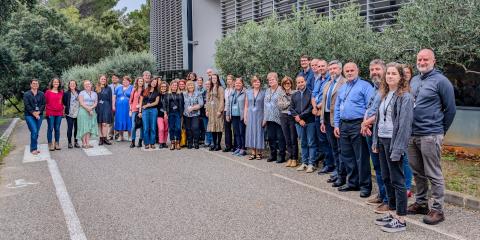Documents and presentations of the fourteenth EU RL annual workshop
The annual workshop is the opportunity for the NRL network to exchange, to receive news from the partners and to have information on the activities run in 2024 and the future actions.
Agenda
The agenda can be downloaded here.
Presentations
Highlights of two scientific conferences on bee health held in 2024
10 years of living with SHB in Calabria region: management and perspectives
Activities of the NRL and current honey bee health status in Belgium
Activities of the NRL and current honey bee health status in Slovakia
Inter-laboratory proficiency test in bacteriology
Low prevalence of Paenibacillus larvae in Apis mellifera in the Netherlands
EU RL activity highlights in 2024 and future actions for 2025-2027
Minutes
The minutes of the 14th Annual Workshop can be found here.
The 14th EURL Annual Workshop
The EURL for Bee Health held its 14th annual workshop on 24th October 2024 in Sophia Antipolis (France).
The participants had the pleasure to listen to two presentations of NRLs’ activities and the current honey bee health status in Belgium by Severine Matthijs (Head of the Belgium NRL) and in Slovakia by Miriam Kantikova (representative of the Slovakian NRL).
Franco Mutinelli, head of the Italian NRL, presented an overview of 10 years living with SHB Calabria region. This year, a focus was done on bacteriology activities. The EURL presented the results of an inter-laboratory proficiency test organised for the NRL network in 2023. Delphine Panziera, head of the Dutch NRL, showed the results of a national study on the prevalence of P. larvae in the Netherlands.
The EURL also presented highlights of two scientific conferences on bee health held in 2024 (Apimondia in June and EurBee in September). The workshop ended by the presentation of the EURL activities during the last period and the work perspectives.
We warmly thank all the speakers for their interesting presentations and all the contributors for the fruitful discussions.
Documents and presentations of the workshop can be found here for the NRL network.

You must be logged in for downloading the report, click on the button below to proceed
Go to login page